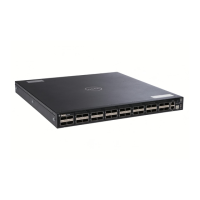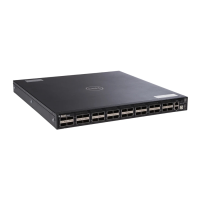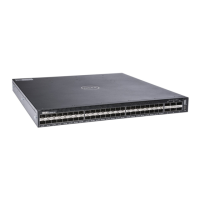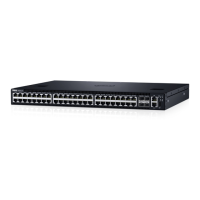Configuring Peer Groups
To configure multiple BGP neighbors at one time, create and populate a BGP peer group.
An advantage of peer groups is that members of a peer group inherit the configuration properties of the
group and share same update policy.
A maximum of 256 peer groups are allowed on the system.
Create a peer group by assigning it a name, then adding members to the peer group. After you create a
peer group, you can configure route policies for it. For information about configuring route policies for a
peer group, refer to Filtering BGP Routes.
NOTE: Sample Configurations for enabling peer groups are found at the end of this chapter.
1. Create a peer group by assigning a name to it.
CONFIG-ROUTERBGP mode
neighbor peer-group-name peer-group
2. Enable the peer group.
CONFIG-ROUTERBGP mode
neighbor peer-group-name no shutdown
By default, all peer groups are disabled.
3. Create a BGP neighbor.
CONFIG-ROUTERBGP mode
neighbor ip-address remote-as as-number
4. Enable the neighbor.
CONFIG-ROUTERBGP mode
neighbor ip-address no shutdown
5. Add an enabled neighbor to the peer group.
CONFIG-ROUTERBGP mode
neighbor ip-address peer-group peer-group-name
6. Add a neighbor as a remote AS.
CONFIG-ROUTERBGP mode
neighbor {ip-address | peer-group name} remote-as as-number
Formats: IP Address A.B.C.D
• Peer-Group Name: 16 characters.
• as-number: the range is from 0 to 65535 (2-Byte) or 1 to 4294967295 | 0.1 to 65535.65535 (4-
Byte) or 0.1 to 65535.65535 (Dotted format)
To add an external BGP (EBGP) neighbor, configure the as-number parameter with a number
different from the BGP as-number configured in the router bgp as-number command.
Border Gateway Protocol IPv4 (BGPv4)
181

